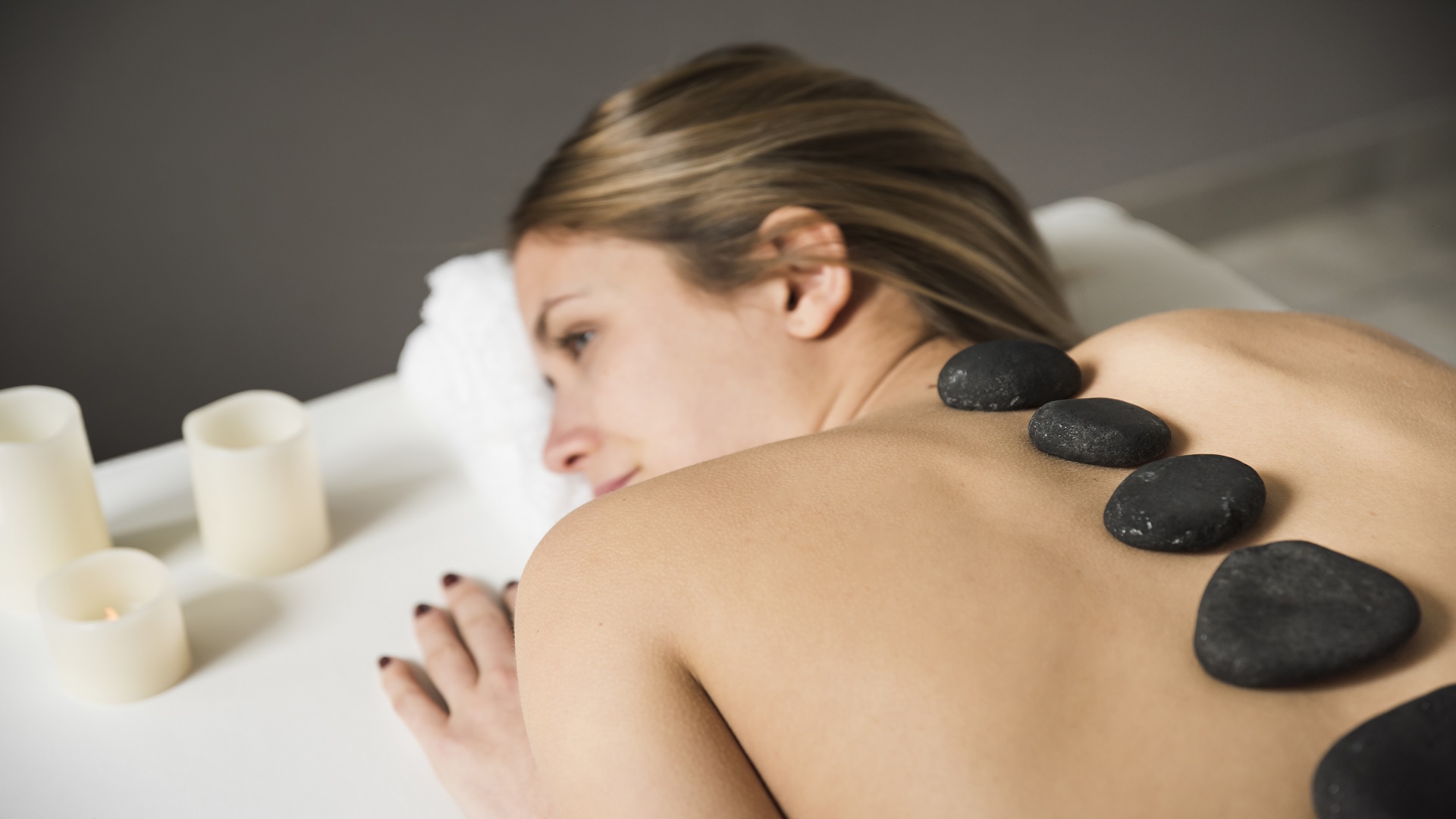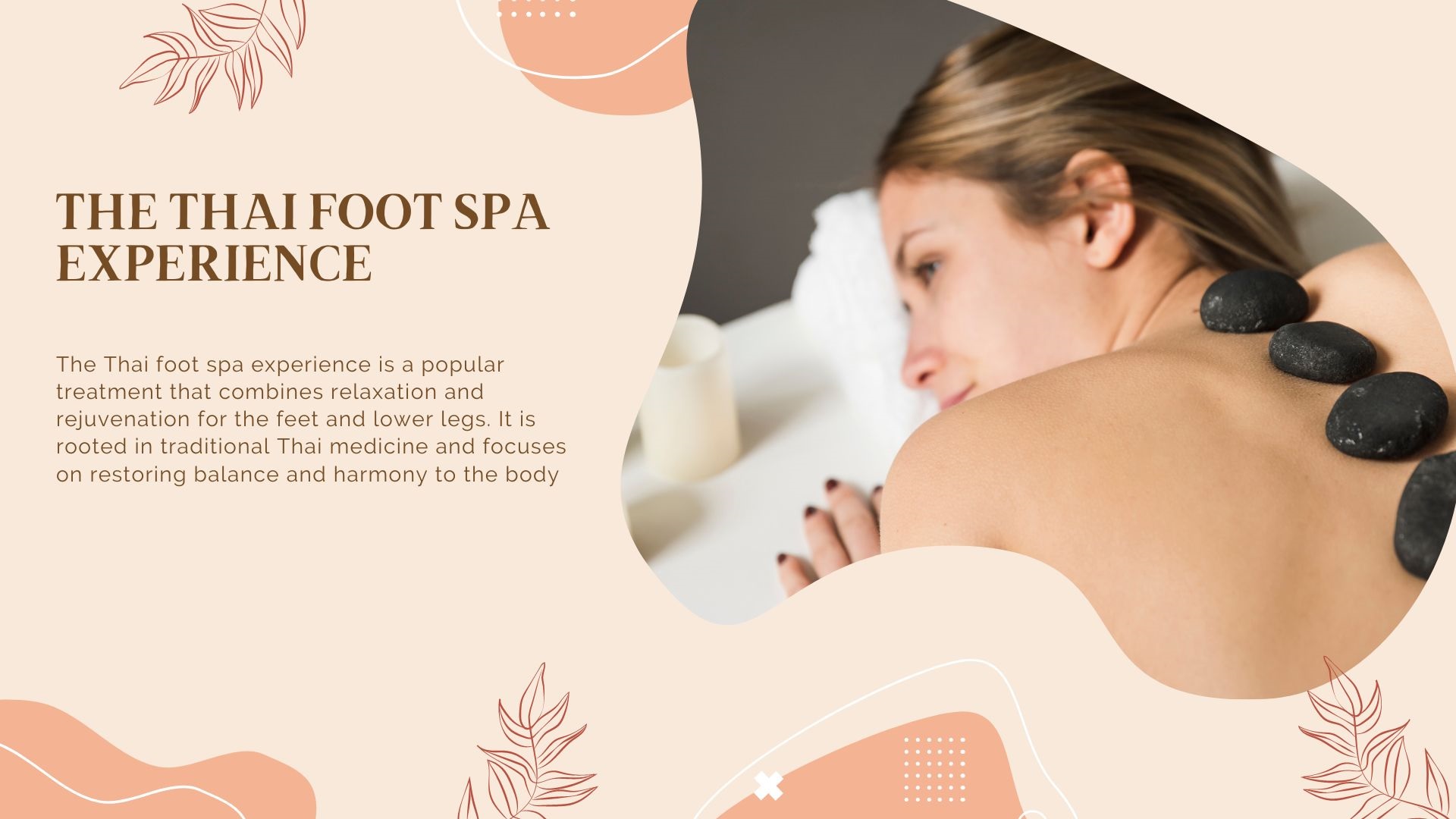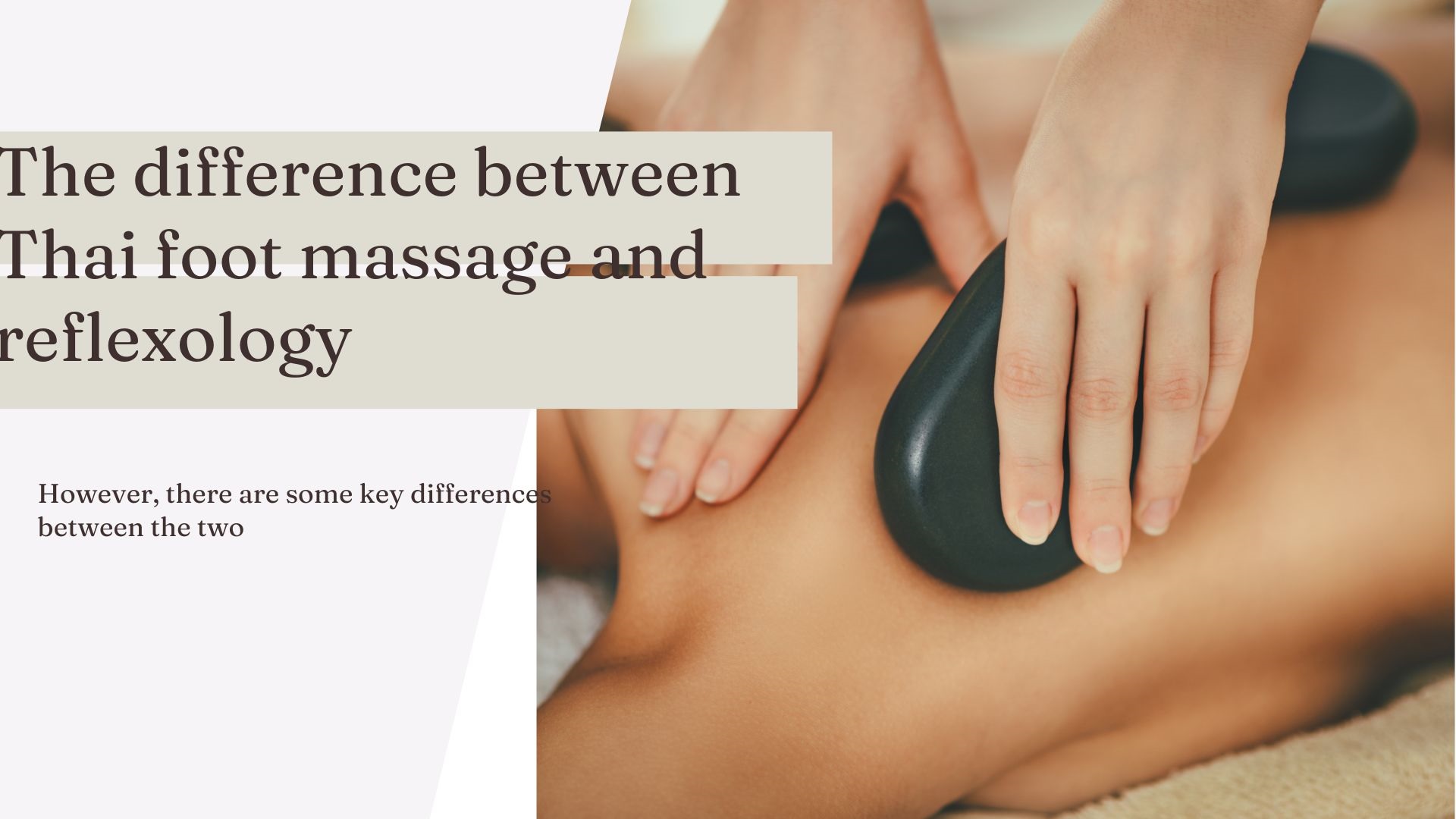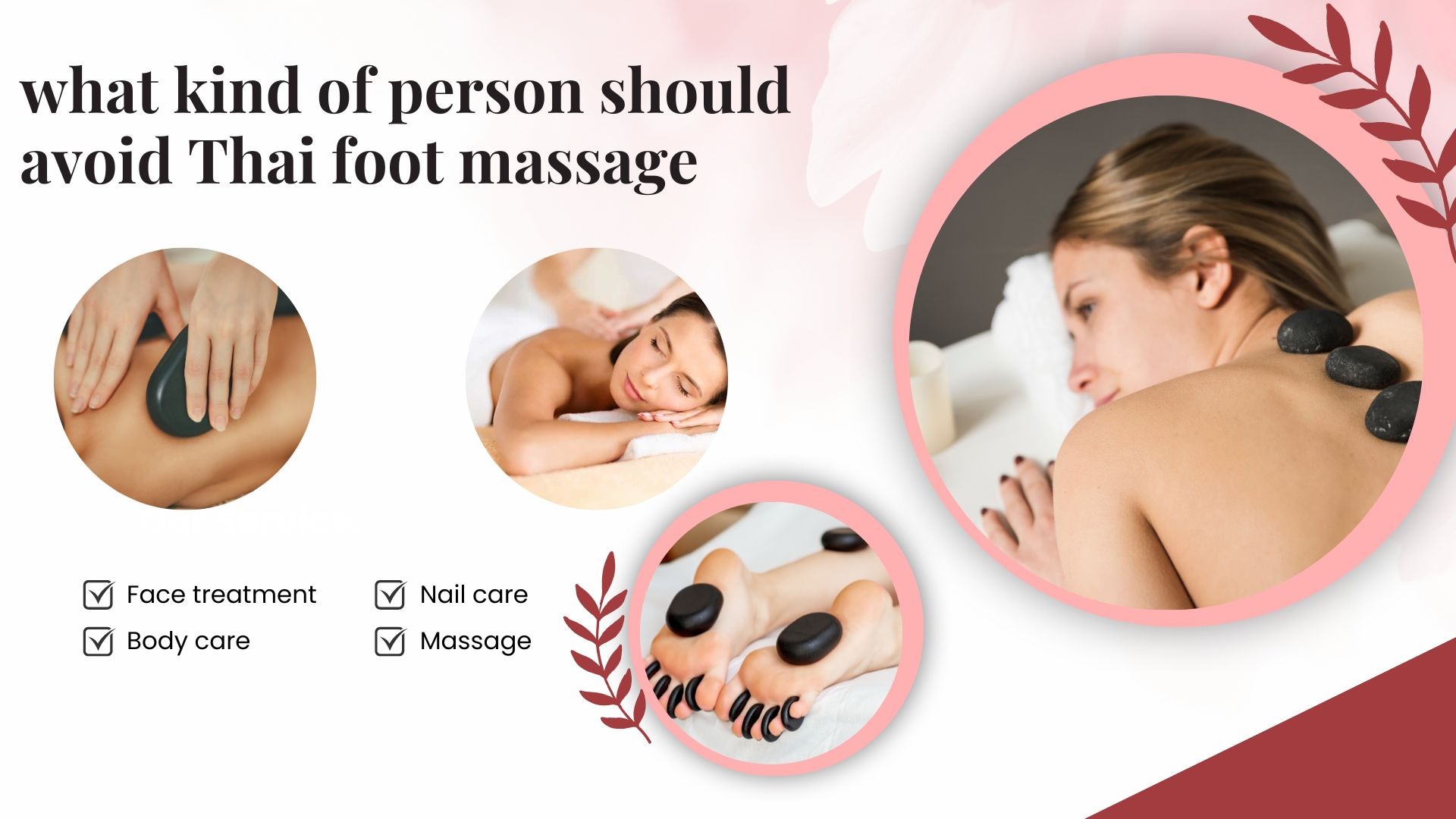Indulging in self-care and pampering is an essential part of maintaining a healthy and balanced lifestyle. When it comes to holistic wellness practices, the Thai foot spa stands out as a haven for relaxation, rejuvenation, and the restoration of inner harmony. This ancient healing art, rooted in traditional Thai medicine, has gained immense popularity worldwide for its numerous health benefits and unique techniques. In this article, we will delve into the intricacies of the Thai foot spa, exploring its origins, therapeutic qualities, and the steps involved in a typical session.

what-is-thai-foot-spa
What is a Thai Foot Spa?
Thai foot spa is a type of spa treatment that focuses on the feet and lower legs. It combines elements of traditional Thai massage, reflexology, and aromatherapy to provide relaxation and therapeutic benefits. The treatment typically involves soaking the feet in warm water infused with herbs or essential oils, followed by a massage and acupressure techniques applied to specific points on the feet and lower legs. Thai foot spa aims to improve circulation, relieve tension, reduce stress, and promote overall well-being.

what-is-a-thai-foot-spa
The Thai foot spa is deeply ingrained in Thai culture and has been practiced for centuries. Based on the principles of reflexology, it aims to stimulate specific pressure points on the feet to promote overall well-being. Thai foot spa techniques were initially developed by Buddhist monks, who believed that the feet were a gateway to the body’s vital energy pathways. The philosophy behind this practice revolves around the concept of balancing energy flow, known as “Sen,” to restore physical and mental equilibrium.
Thai foot spa is a traditional therapeutic practice that originated in Thailand. It focuses on stimulating specific points on the feet to promote relaxation, improve circulation, and restore balance to the body. This ancient healing technique has gained popularity worldwide, thanks to its numerous benefits and the sense of tranquility it provides.
Practical experience does Thai foot massage hurt?
When it comes to relaxation and rejuvenation, Thai foot massage has gained popularity for its ability to soothe tired feet and promote overall well-being. However, one common concern among potential recipients is whether this ancient practice involves any discomfort. In this blog post, we will delve into the world of Thai foot massage, addressing the pertinent question: Does Thai foot massage hurt? Join us as we explore the comfort and benefits associated with this therapeutic practice.

practical-experience-does-thai-foot-massage-hurt
Contrary to popular belief, Thai foot massage is generally a soothing and relaxing experience rather than a painful one. The level of pressure applied during the pure spa massage can be customized according to individual preferences and tolerance. Skilled therapists are trained to identify the right intensity, ensuring a comfortable and enjoyable session for the recipient.
So, does Thai foot massage hurt? The answer is a resounding no. It’s, when performed by a skilled therapist, is a comforting and soothing experience that offers a multitude of benefits for the body and mind. From stress relief to improved circulation and pain reduction, this ancient healing therapy has become a popular choice for those seeking holistic well-being.
If you’re considering a Thai foot massage, rest assured that you’ll likely experience a wonderful sense of relaxation and rejuvenation. So go ahead, indulge in this therapeutic practice, and let your feet experience the ultimate pampering they deserve.
Remember to consult a professional therapist to ensure the best results and always communicate your preferences and concerns during the session. Unwind, relax, and let Thai foot massage transport you to a world of blissful tranquility.
#1 The Pure Bliss of Spa Massage: Ultimate & Wellness Relaxation
Top 9 what are the benefits of a Thai foot spa?
Thai foot spa, also known as Thai foot massage or reflexology, is a traditional healing technique from Thailand that focuses on stimulating specific pressure points on the feet to improve overall health and well-being. Here are some potential health benefits of Thai foot spa:

top-9-what-are-the-benefits-of-a-thai-foot-spa
- Stress relief with helps to relax the body and mind, reducing stress levels and promoting a sense of calm and relaxation.
- Improved circulation: The massage techniques used in Thai foot spa can enhance blood circulation, allowing for better nutrient and oxygen delivery to the body’s cells and tissues.
- Pain relief: Thai foot spa can help alleviate pain and discomfort in the feet, ankles, and lower legs. It is particularly beneficial for people who spend long hours on their feet or suffer from conditions such as plantar fasciitis or arthritis.
- Detoxification: Thai foot spa stimulates the lymphatic system, which helps to eliminate toxins from the body and improve overall detoxification.
- Enhanced energy flow: According to traditional Thai medicine, there are energy channels or “sen” running throughout the body. It is helps to unblock these energy channels, allowing for a better flow of energy and promoting overall vitality.
- Improved sleep: Thai foot spa can aid in promoting better sleep and relieving insomnia by reducing stress and inducing relaxation.
- Boosted immune system: Regular Thai foot spa sessions may help to strengthen the immune system, making the body more resistant to illnesses and infections.
- Improved mental clarity can help clear the mind, improve focus, and enhance mental clarity.
- Balance restoration: Thai foot spa aims to restore the natural balance within the body, promoting overall well-being and harmony.
It is important to note that while Thai foot spa can provide these potential health benefits, it should not be used as a substitute for medical treatment. If you have any specific health concerns or conditions, it is best to consult with a healthcare professional before trying Thai foot spa.
The Thai Foot Spa Experience is for everyone?

the-thai-foot-spa-experience-is-for-everyone
- The Thai foot spa experience is a popular treatment that combines relaxation and rejuvenation for the feet and lower legs. It is rooted in traditional Thai medicine and focuses on restoring balance and harmony to the body.
- The treatment typically begins with the therapist washing the client’s feet with warm water and Thai herbs to cleanse and refresh them. Afterward, the therapist will apply pressure to specific points on the foot, following the energy lines known as “sen” in Thai medicine. This technique is similar to reflexology, where each point on the foot corresponds to a different part of the body.
- During the treatment, the therapist will use their hands, fingers, and sometimes a wooden stick to massage and stimulate the pressure points. This helps to improve circulation, release tension, and promote overall well-being. The pressure applied can vary from gentle to firm, depending on the client’s preferences and needs.
- In addition to the foot massage, some Thai foot spa experiences may include a lower leg massage, stretching, and even hot stone therapy. These additional elements further enhance the relaxation and therapeutic benefits of the treatment.
- Throughout the session, calming music and aromatherapy are often used to create a soothing ambiance. The environment is designed to promote tranquility and allow clients to unwind and escape from the stresses of everyday life.
- The Thai foot spa experience is known for its ability to relieve muscle pain, reduce stress, improve sleep quality, and promote relaxation. It is a holistic treatment that targets not only the feet but also the whole body and mind.
- Herbal Compress or Moisturizing Treatment: To conclude the session, a soothing herbal compress or moisturizing treatment may be applied to your feet, leaving them nourished and revitalized.
Overall, the Thai foot spa experience provides a unique and rejuvenating way to pamper and take care of the feet, while also benefiting the entire body. Whether you are seeking relaxation, stress relief, or a boost in overall well-being, this treatment can offer a blissful and therapeutic experience..
How long does a typical Thai foot spa session last for women?

how-long-does-a-typical-thai-foot-spa-session-last-for-women
If you’re curious about how long a typical session lasts, you’ve come to the right place. In this article, we will provide you with all the information you need, ensuring you have a comprehensive understanding of the duration of a Thai foot spa session. So, let’s get started!
The Duration of a Typical Thai Foot Spa Session: may vary on several factors, including the spa’s, individual preferences, and available treatment options. On average, a typical Thai foot spa session lasts approximately 60 minutes. During this time, you can immerse yourself in a blissful experience that combines massage, reflexology, and the use of aromatic oils.
Benefits of a 60-Minute Thai Foot Spa Session:
- 1. Relaxation and Stress Relief: A 60-minute session allows ample time for you to unwind, release tension, and experience deep relaxation. The therapeutic touch and gentle massage techniques can melt away stress, leaving you feeling rejuvenated.
- 2. Improved Circulation: The foot massage techniques applied during a Thai foot spa session promote blood circulation, which can alleviate foot pain, reduce swelling, and improve overall blood flow throughout the body.
- 3. Enhanced Energy Flow: Thai foot spa sessions focus on stimulating specific reflex points on the feet, which correspond to various organs and systems in the body. This process helps restore the natural flow of energy, enhancing overall well-being.
- 4. Detoxification and Cleansing: By targeting specific pressure points, a Thai foot spa session can assist in eliminating toxins from the body, leading to a sense of detoxification and cleansing.
In conclusion, a typical Thai foot spa session lasts for around 3600 second, providing ample time for relaxation, rejuvenation, and various therapeutic benefits. As you indulge in this traditional healing art form, you’ll experience the harmonious blend of massage, reflexology, and aromatic oils, leaving you feeling refreshed and revitalized. Remember, the duration of a Thai foot spa session may vary
The difference between Thai foot massage and reflexology in 2028

the-difference-between-thai-foot-massage-and-reflexology-in-2028
Is thai foot massage good for you and reflexology are both forms of alternative therapy that involve manipulating specific points on the feet to promote relaxation and overall well-being. However, there are some key differences between the two:
- Origin: Thai foot massage originated in Thailand and is deeply rooted in Thai culture and traditional medicine. Reflexology, on the other hand, has its roots in ancient Chinese and Egyptian practices.
- Technique: Thai foot massage typically involves the use of hands, fingers, and a wooden stick to apply pressure to specific points on the feet. It also incorporates stretching and massage techniques on the lower legs and feet. Reflexology, on the other hand, primarily focuses on applying pressure to specific reflex points on the feet using the thumbs, fingers, and hands.
- Philosophy: Thai foot massage is based on the belief that there are energy lines or channels running through the body, and by stimulating specific points on the feet, energy blockages can be released, promoting the body’s natural healing processes. Reflexology, on the other hand, is based on the belief that specific reflex points on the feet correspond to different organs, glands, and systems of the body, and by applying pressure to these points, it can have a positive effect on the corresponding areas.
- Benefits: Both Thai foot massage and reflexology are believed to have similar benefits, such as promoting relaxation, reducing stress, improving circulation, and enhancing overall well-being. However, Thai foot massage may also incorporate elements of traditional Thai medicine, such as herbal treatments, to further enhance its therapeutic effects.
It’s important to note that while Thai foot massage and reflexology share some similarities, they are distinct practices with their own techniques and philosophies. It’s always advisable to consult with a trained therapist to determine which therapy may be most suitable for your specific needs and preferences.
The Doctor said what kind of person should avoid Thai foot massage?

the-doctor-said-what-kind-of-person-should-avoid-thai-foot-massage
In this blog post, we will discuss the individuals who should exercise caution or avoid Thai foot massage altogether. By understanding these considerations, you can make an informed decision about whether this treatment aligns with your specific needs.
- Pregnant women: Thai foot massage involves applying pressure to certain reflexology points on the feet, which can potentially stimulate contractions. While it is generally safe during early pregnancy, it is advisable to consult with a healthcare professional before opting for this treatment.
- Individuals with foot injuries or infections: If you have open wounds, cuts, blisters, or any type of infection on your feet, it is recommended to avoid Thai foot massage. The vigorous kneading and stretching movements may exacerbate the condition or lead to further injury.
- People with certain medical conditions: While Thai foot massage is generally safe, individuals with specific medical conditions should approach it with caution or seek medical advice prior to treatment. These conditions include:
a. Deep vein thrombosis (DVT): Those suffering from DVT, a condition characterized by blood clot formation, should avoid foot massages that involve strong pressure or intense kneading. The pressure applied during the massage could potentially dislodge the clot and pose serious health risks.
b. Peripheral neuropathy: People with peripheral neuropathy, a condition affecting the nerves in the feet, may have reduced sensation or heightened sensitivity. The intensity of Thai foot massage might be uncomfortable or even painful for individuals with this condition.
c. Osteoporosis: Individuals with osteoporosis, a condition characterized by weak and brittle bones, should exercise caution during a foot massage. High-pressure techniques may increase the risk of fractures or bone damage.
d. Diabetes: Diabetic individuals need to be cautious as foot massage can affect blood sugar levels. It is advisable for them to consult with their healthcare provider to determine whether Thai foot massage is suitable.
Conclusion:
The Thai foot spa is much more than a mere indulgence; it is a holistic healing practice that offers numerous physical and mental benefits. By embracing the ancient wisdom of Thai medicine, this therapeutic treatment provides a gateway to serenity and revitalization. So, why not embark on this journey of relaxation and rejuvenation, and allow the Thai foot spa to restore your mind, body, and soul?


 Mastodon
Mastodon


